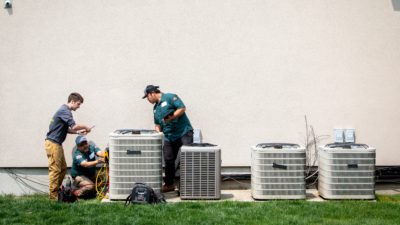Last month a United Airlines passenger flight left Chicago O’Hare International Airport and flew to Ronald Reagan Washington National Airport – but it wasn’t just any old flight.
While United Airlines has been mixing Sustainable Aviation Fuel (SAF) and conventional jet fuel since 2016, last month’s flight was the first time any airline used only SAF in one engine.
Research by the U.S. Department of Energy’s Bioenergy Technologies Office attributed to the development of the technology that powered the 737 MAX 8, carrying 100+ individuals on December 1st, including United Airlines’ CEO.
Aviation Fuel Consumption & Aviation Industry Statistics
- A flight between London and San Francisco equates to 1 ton of CO2 emissions per passenger (BP)
- Since 2009, the global fuel consumption by commercial airlines has increased every year (Statista)
- In 2019, fuel consumption reached a high of 95 billion gallons (Statista)
- In 2019, commercial airlines generated about $838 billion in revenue (Statista)
- About 2.4% of worldwide CO2 emissions come from the aviation sector (BBC)
- Aviation represents 11% of emissions related to U.S. transportation – flights within and departing from the U.S. (The White House)
- Due to the global health pandemic, fuel consumption dropped to 52 billion gallons in 2020 and 57 billion gallons in 2021 (Statista)
- The aviation industry is predicted to double to more than 8 billion passengers by 2050 (BP)
What is Sustainable Aviation Fuel (SAF)?
Sustainable Aviation Fuel is a biofuel that powers aircraft similarly to conventional jet fuel, but with a smaller carbon footprint. The U.S. Department of Energy (DOE) states that “some emerging SAF pathways even have a net-negative GHG footprint.”
How is it made?
- Feedstock is collected like
- solid household and business waste such as paper, textiles, packaging, and food waste
- forestry waste like waste wood and energy crops, including quickly growing plants and algae
- cooking oils and non-palm waste oils from animals or plants
- Feedstock is converted to SAF
- Traditional jet fuel is blended with SAF to make it usable for airplanes
According to GE, airlines are only allowed to use a max of 50% SAF in commercial flights which is why United Airlines only operated one of the two engines on 100% SAF and the other on 100% conventional jet fuel – it ended up being about 500 gallons for each.
Other Benefits of SAF
Beyond lowering carbon emissions, the U.S. DOE says that biomass crops can also
- Allow farmers to make more money during off seasons by growing biomass crops for SAF production
- Help to control erosion and improve water quality and quantity
- Increase biodiversity and store carbon in the soil
- Help to improve aircraft performance and create cleaner operations
- Create U.S. job opportunities like feedstock production in farming communities and construction jobs for building biorefineries
The Future of SAF
The U.S. DOE says that the U.S. has the resources available for the production of 50-60 billion gallons of SAF, using “an estimated 1 billion dry tons of biomass that can be collected sustainably each year in the United States.”
According to the U.S. DOE, the goal is to have sustainable fuels meet 100% of aviation fuel demand by 2050, decreasing emissions within the aviation space.
“SAF gives an impressive reduction of up to 80% in carbon emissions over the lifecycle of the fuel compared to traditional jet fuel it replaces, depending on the sustainable feedstock used, production method and the supply chain to the airport,” says BP.
United Airlines has committed to buying 1.5 billion gallons of SAF over the next 20 years.
How You Can Fly Sustainably
SAF aside, what are some other ways to reduce your contribution to greenhouse emissions while flying?
- Choose non-stop flights instead of travel journeys with multiple stops (planes release the most carbon during takeoff and landing)
- Fly economy instead of a first-class seat with a bigger carbon footprint (its footprint is typically double that of an economy seat!)
- Do your research and choose airlines that are working toward sustainability goals
- Think about your journey as a whole and choose low-emission ways to arrive to and depart from the airport
- Use a lightweight suitcase and leave some things at home (the lighter the weight, the less airplane fuel used, meaning less emissions)
- Make greener choices like using an app instead of printing out your boarding pass and bringing a reusable cup for your in-air drinks
- Take a bus or train to closer destinations instead of flying (driving in a car by yourself is not any better than flying!)
We’ll be keeping an eye on the integration of SAF in everyday commercial flights as we do our own work to make the world a greener place.
What will you do today to make an impact on your community? If you need ideas, check out our HomeWorks Energy blog here.
If you want help to make your home more energy efficient, sign up for a no-cost Home Energy Assessment here. We offer many discounts and Mass Save® rebates for heating, cooling, insulation, and air sealing needs.
Resources:








